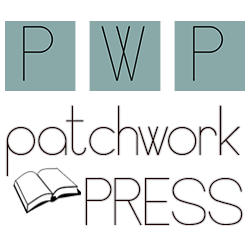 Today, I’ve got something special for you! I don’t host guest posts very often, but… I always love fairytale retellings, so I just had to have Anna Rose, author of Goldilocks on the blog. You should absolutely check out her book, Goldilocks and then read on to find out how she went about adapting this classic character.
Today, I’ve got something special for you! I don’t host guest posts very often, but… I always love fairytale retellings, so I just had to have Anna Rose, author of Goldilocks on the blog. You should absolutely check out her book, Goldilocks and then read on to find out how she went about adapting this classic character.
Synopsis: Katherine, who has grown up in the comfort and safety of her father’s palace, finds herself drawn to the cottage where her late grandmother grew up. Lured by the mysteries of the forest, and alarmed by talk of marriage between her sister and their cousin, she follows her Great-Aunt Rose into the unknown.
Although Katherine enjoys the simple life, she begins to fear for Rose’s sanity as the old woman recalls her childhood experiences, so fantastical they must surely have been imagined. She also fears the rumours of dangerous animals nearby, but an encounter with three bears leads her to discover that her aunt’s stories are true, and that the forest holds secrets even Rose never dreamed of. -Goodreads
Purchase Goldilocks: @Amazon (US) @Amazon (CAN)
And now… Goldilocks, Past and Present!
Fairytales in all forms, all media and of all eras will always be loved. I wrote Goldilocks because I am one such lover of fairytales, and retellings of all kinds, and it is my hope that this particular retelling will be enjoyed by likeminded people.
Perhaps Goldilocks was a strange choice of heroine, as her story is brief and we know almost nothing about her. In fact, I’d say the only thing we know for sure is that she is not a heroine at all, but rather nothing more than a brazen intruder. Sometimes the media, from Roald Dahl’s wonderful Revolting Rhymes (do read it if you haven’t already) to an episode of the classic sitcom The Addams Family, would have it that Goldilocks is intended to be the ‘good guy’. I’ve never understood this point of view, and I daresay Robert Southey – the first to record ‘The Three Bears’ in narrative form – would feel the same way. I discovered, whilst researching the story’s history, that Southey wrote the Goldilocks character as an old vagrant woman, and was unkind in his descriptions of her. From there, the evolution of the character is very interesting, but I mustn’t bore you with that now. Instead, let me get onto my Goldilocks.
The first thing to do was change her from an antagonist to a protagonist, whilst sticking as closely as possible to the iconic events of the fairytale. Generally speaking, it isn’t difficult to find ways to necessitate someone entering a house in the middle of the forest. Going back to Southey’s old woman, the very word ‘vagrant’ suggests homelessness; perhaps she was simply cold and tired and hungry. That’s not to say this is the idea I went with, and I hope that what I did was a little more inventive than that. I did take inspiration from Southey’s original tale, however, and had an older woman be the first to the invade the three bears’ home.
It was some years ago that I saw the potential for a coming-of-age story inspired by this tale of a young girl wandering into the forest and encountering wild beasts. Of course, I know I wasn’t by any means the first to think along those lines. The already symbol-rich ‘Little Red Riding Hood’ has been consistently popular for adaptation, and there have been some marvellous retellings of the lesser known ‘Snow White and Rose Red’, a fairytale which has similarities to ‘The Three Bears’ and is more than a little significant in my own Goldilocks. (Here I must take a moment to recommend Margo Lanagan’s wonderful novel Tender Morsels, which helped to inspire some of the ideas in this novel.)
In writing this book I set out to create something accessible and entertaining, with a little to chew on, and which pays homage to the much loved fairytales that inspired it. Now I’d like to end by thanking Kellie for this opportunity to talk about – and, indeed, promote – my tribute to this timeless genre.
You can visit Anna Rose, on her website to learn more about her novel, Goldilocks.









Leave a Reply